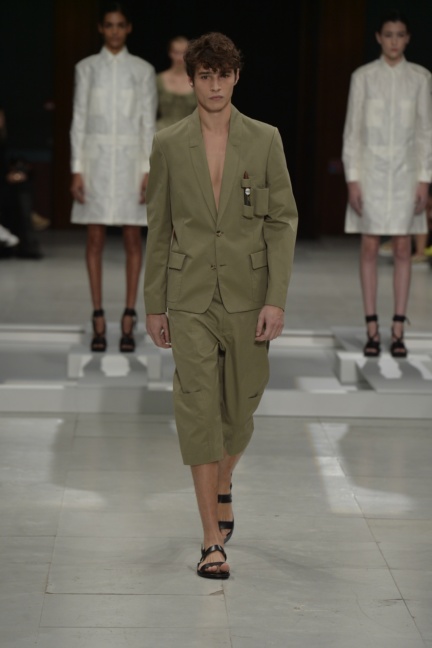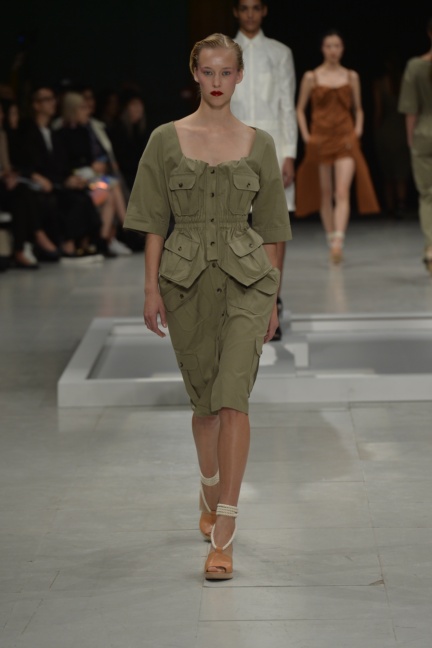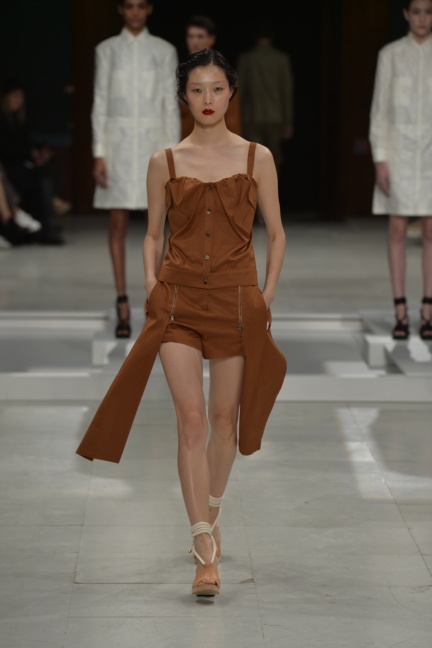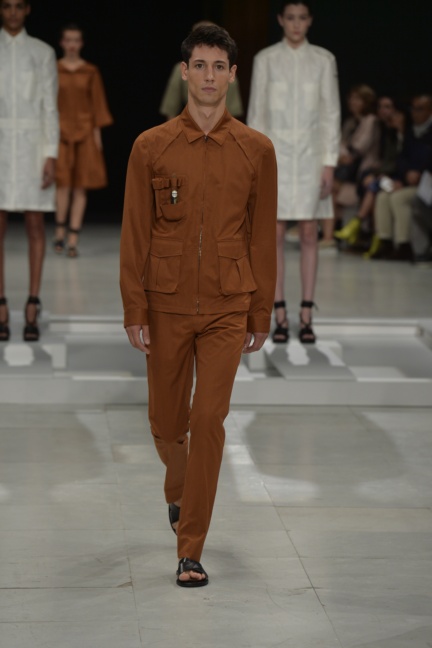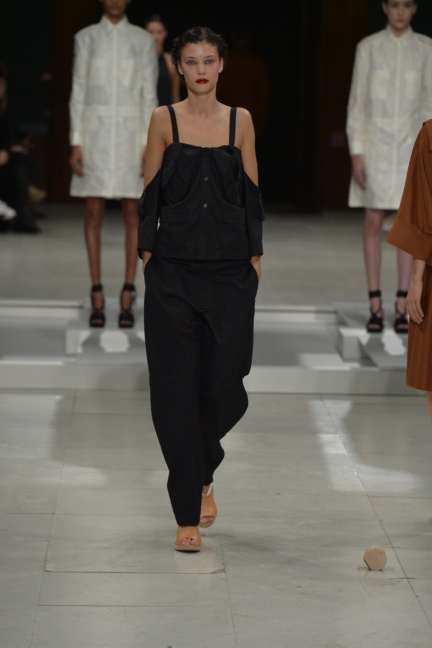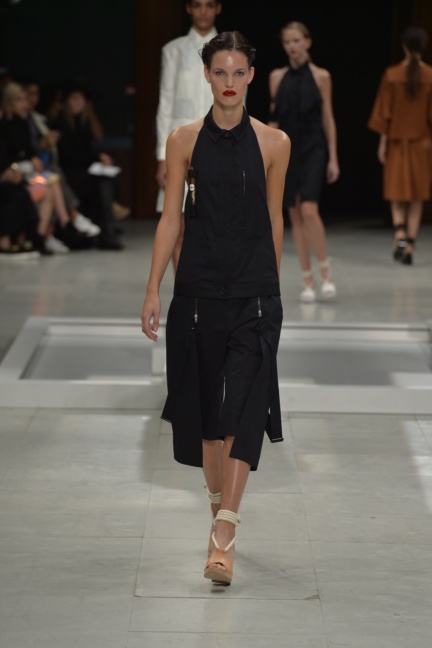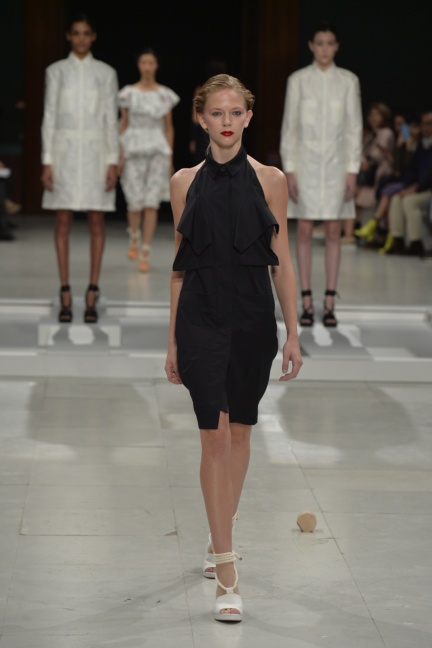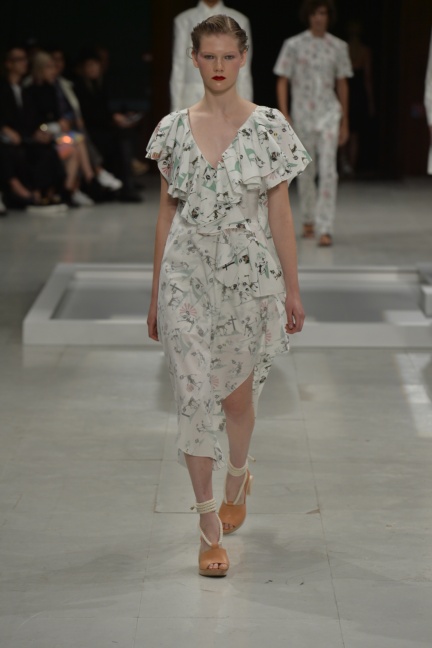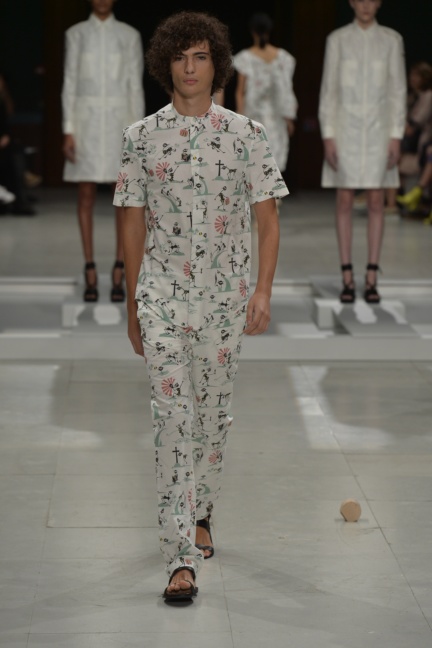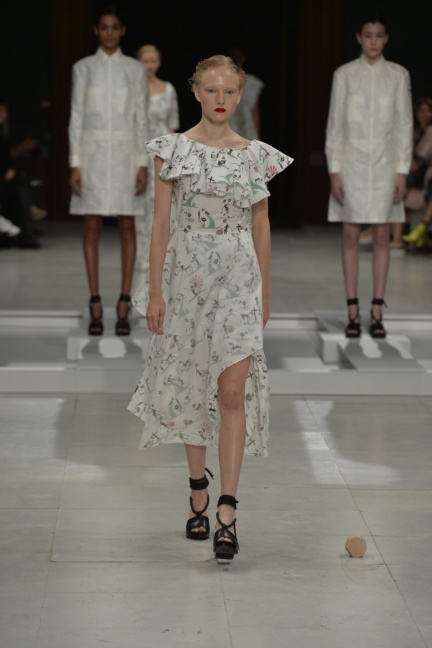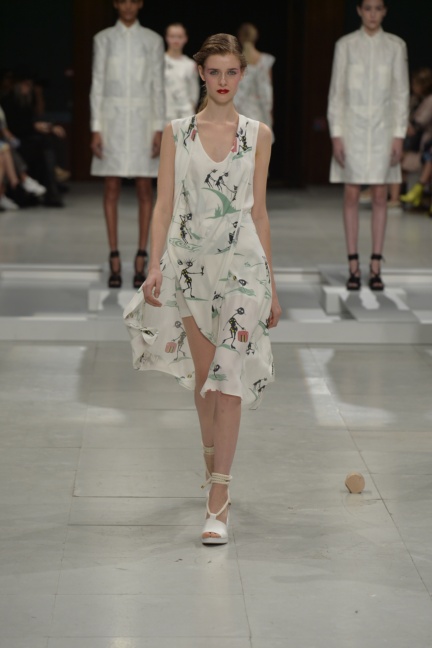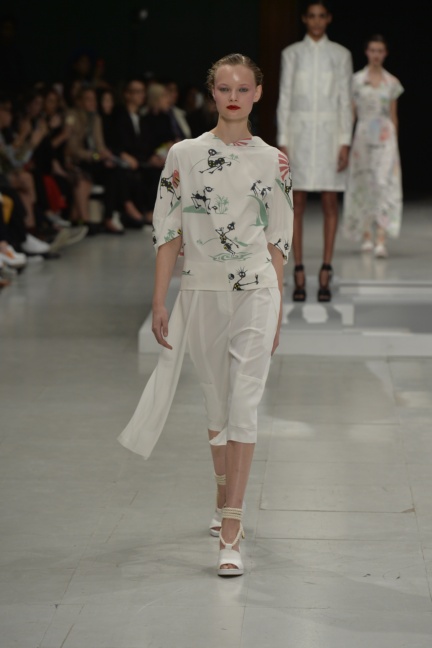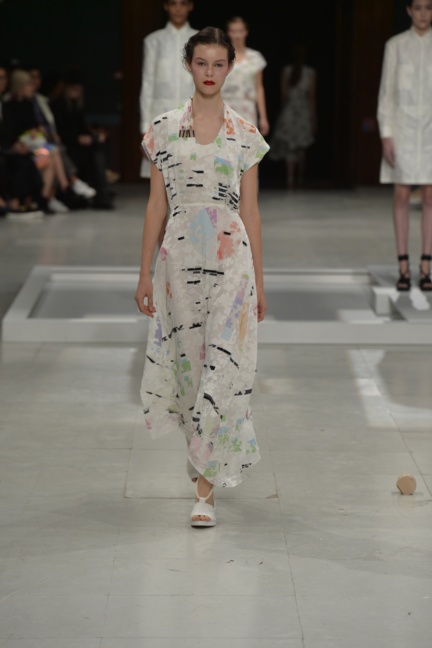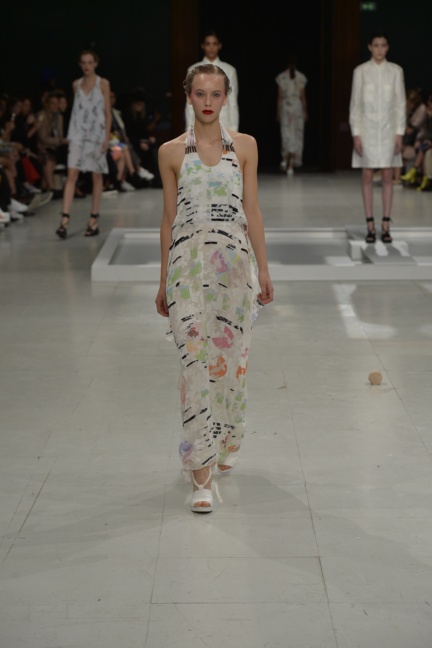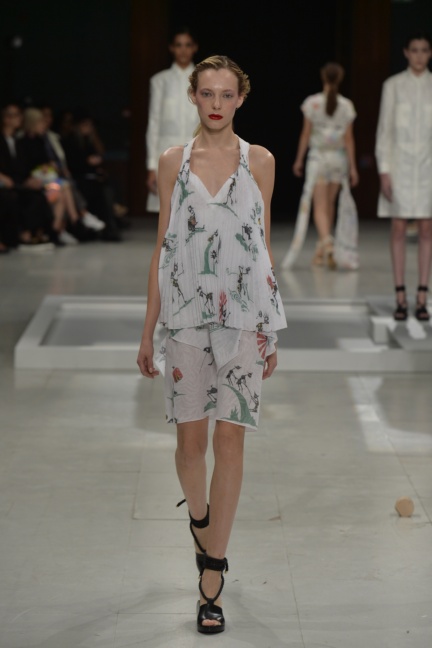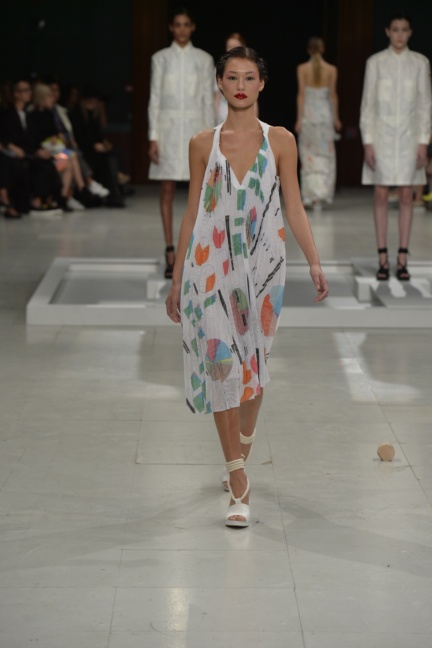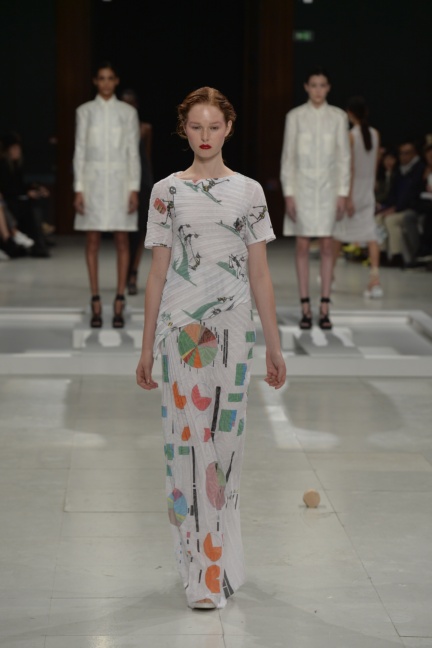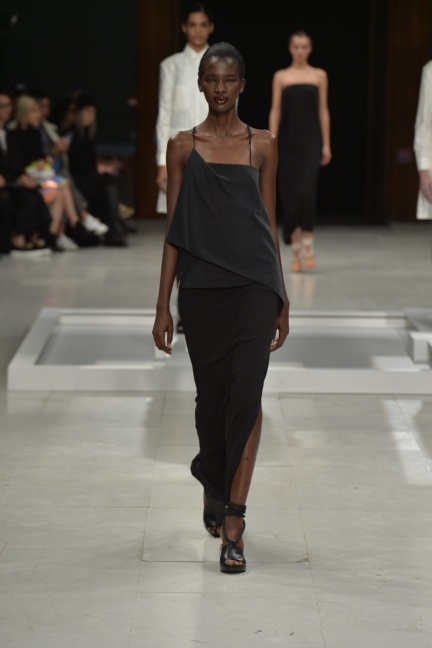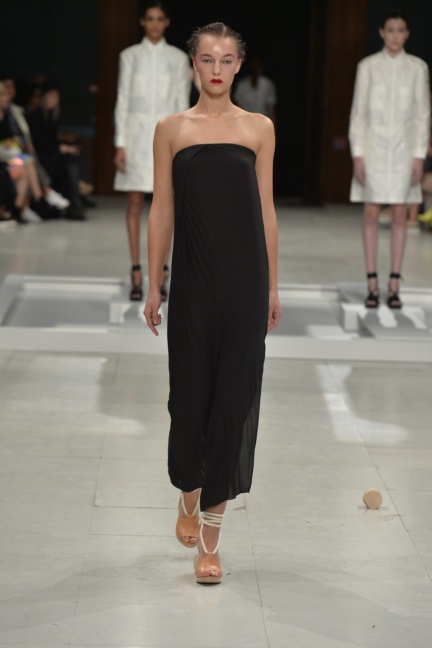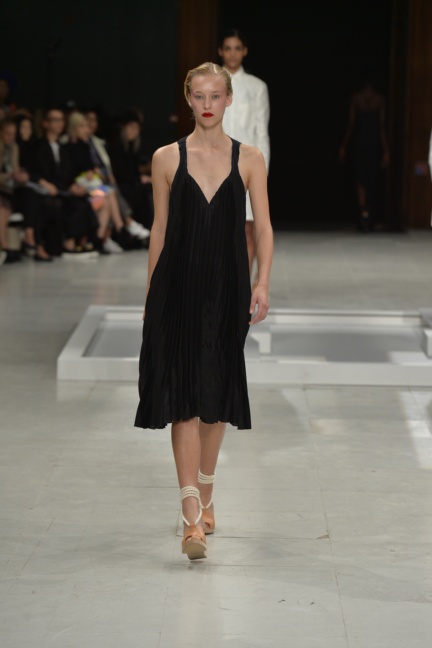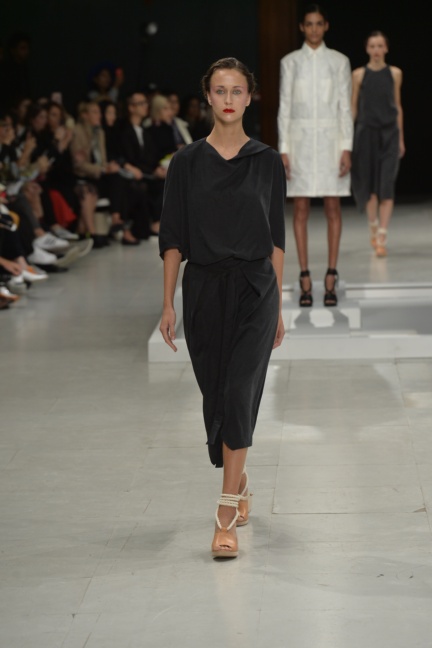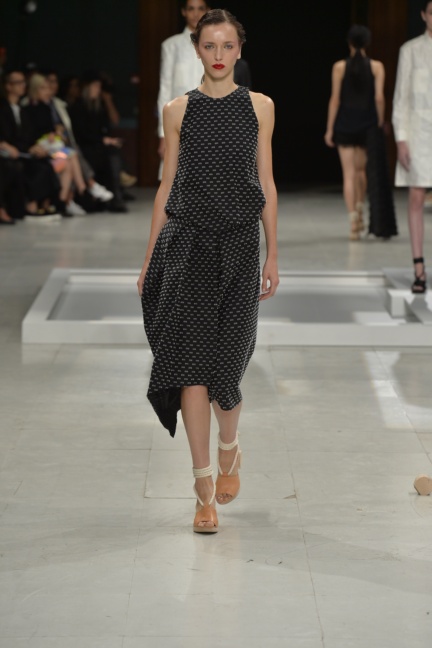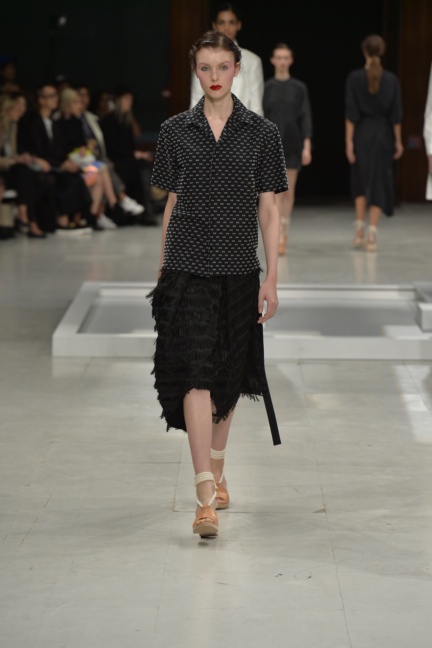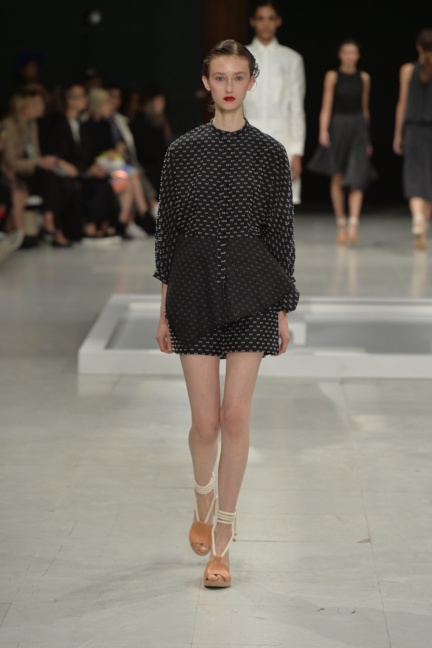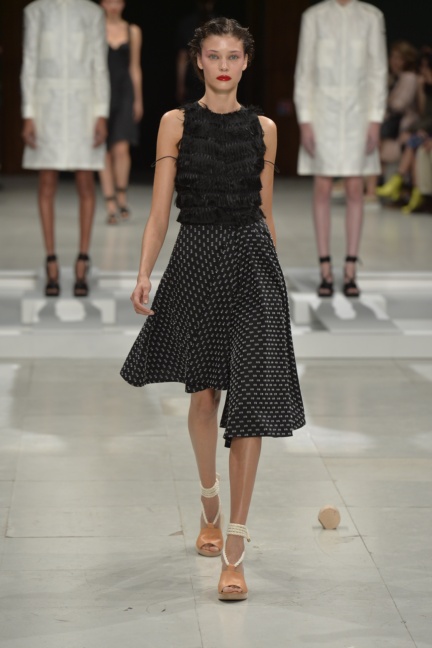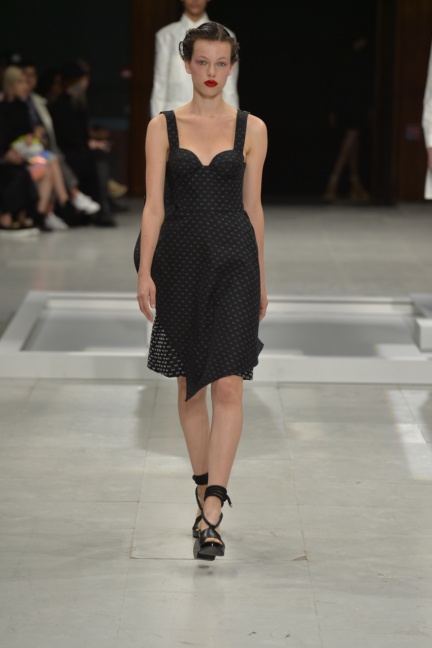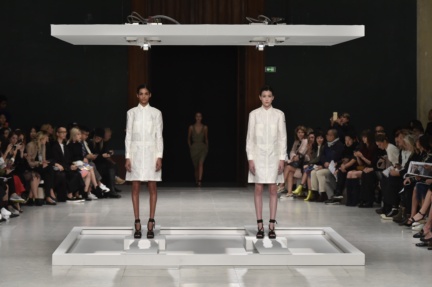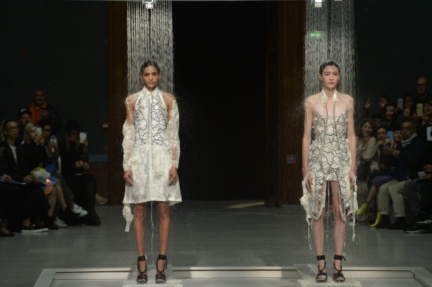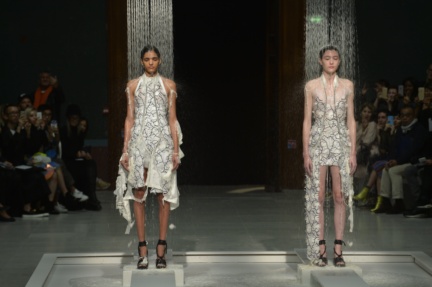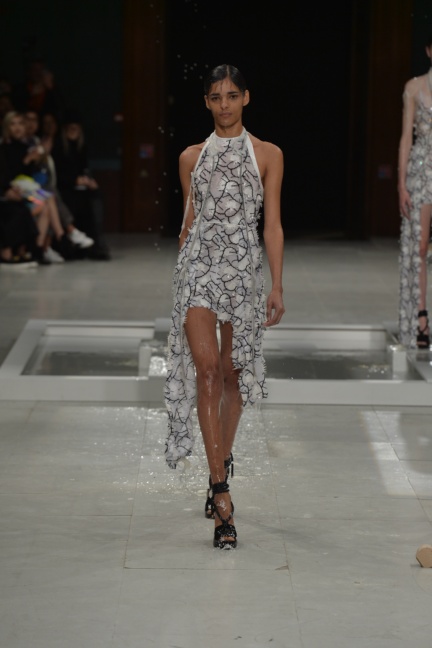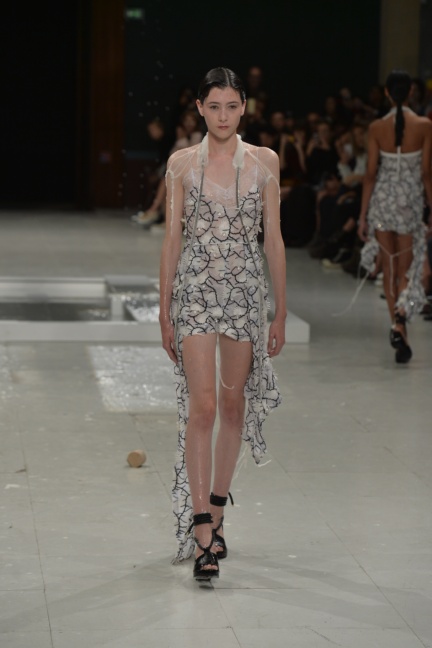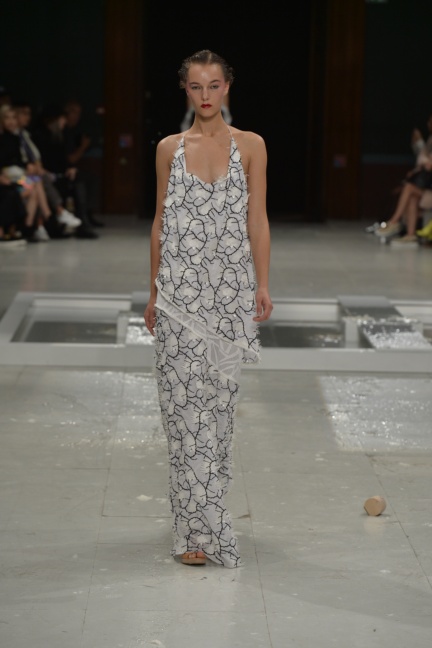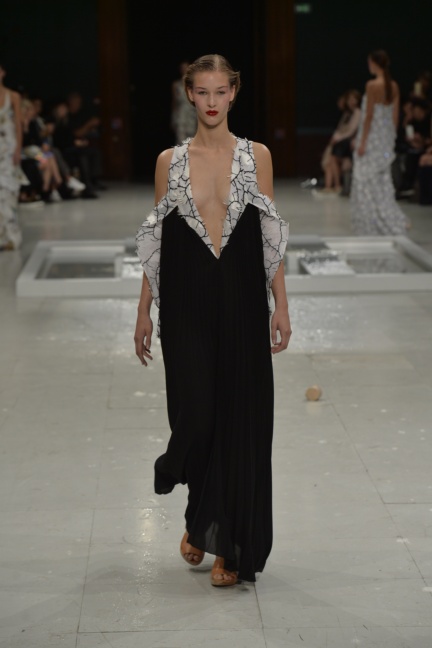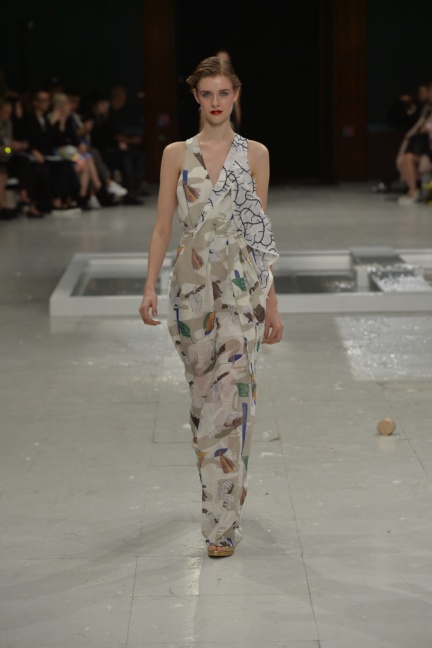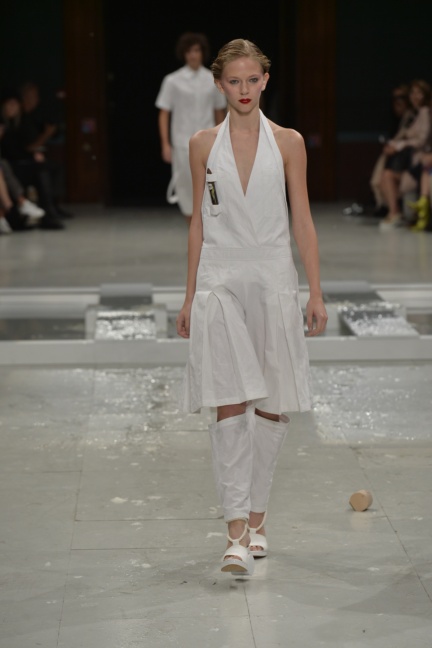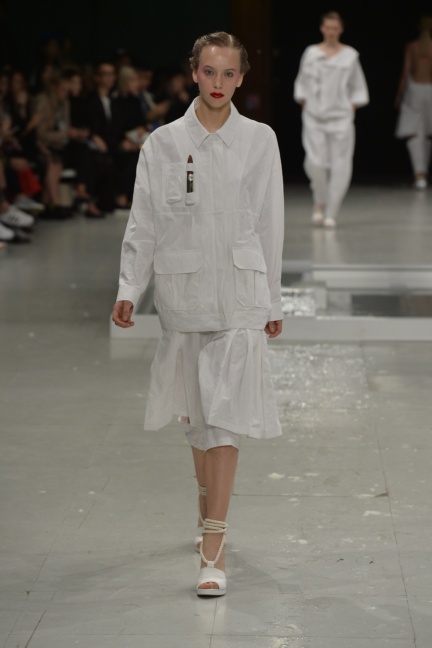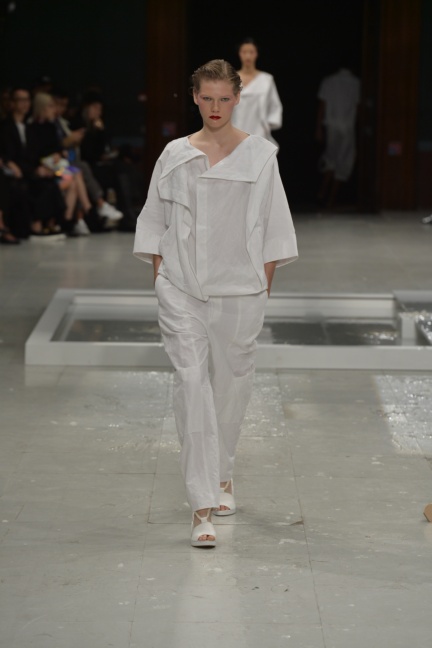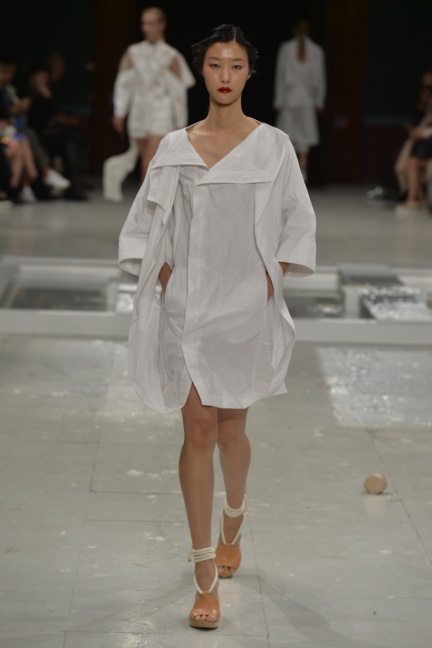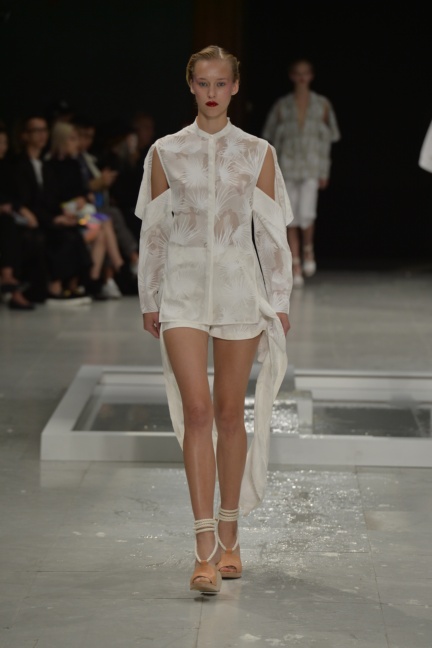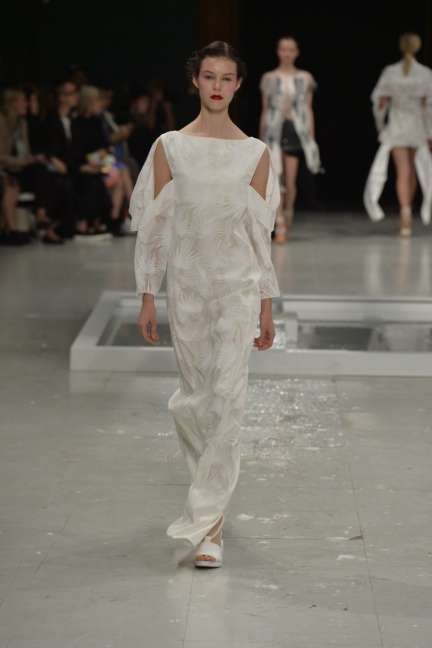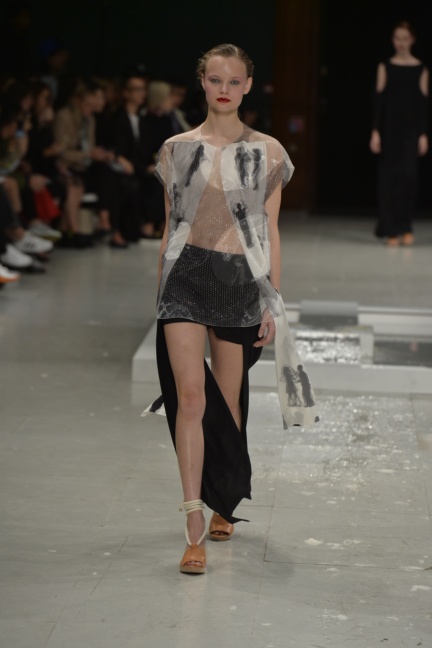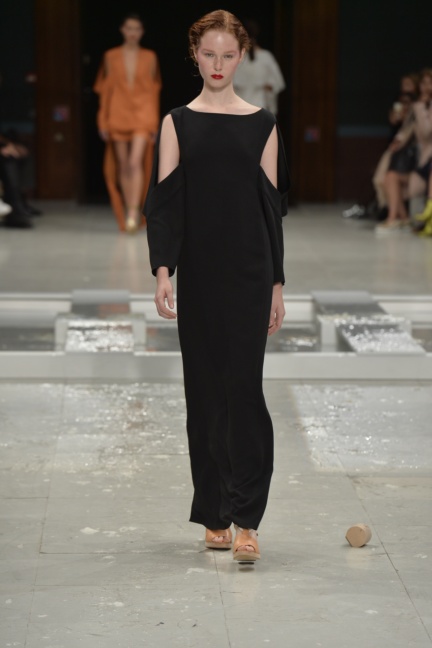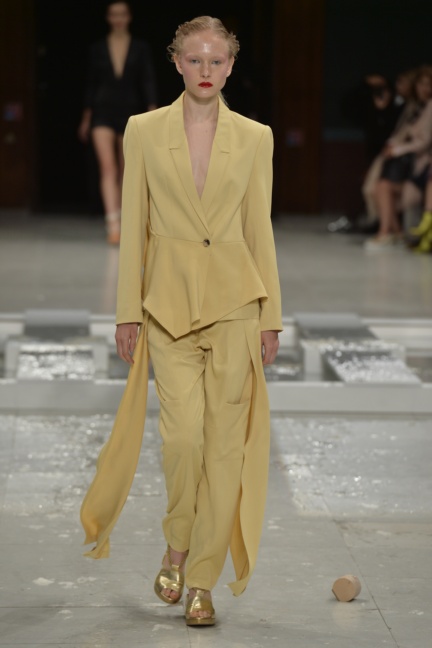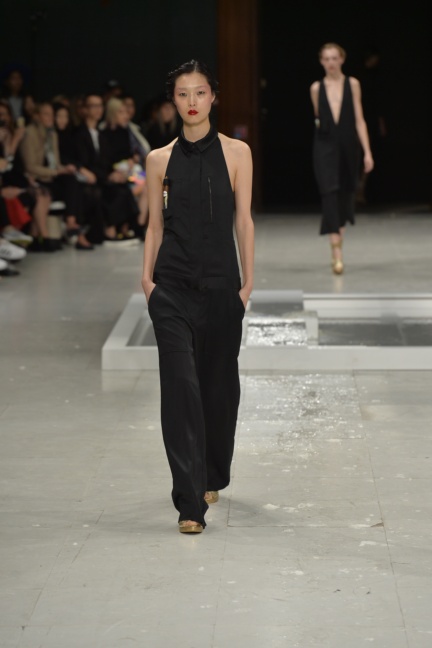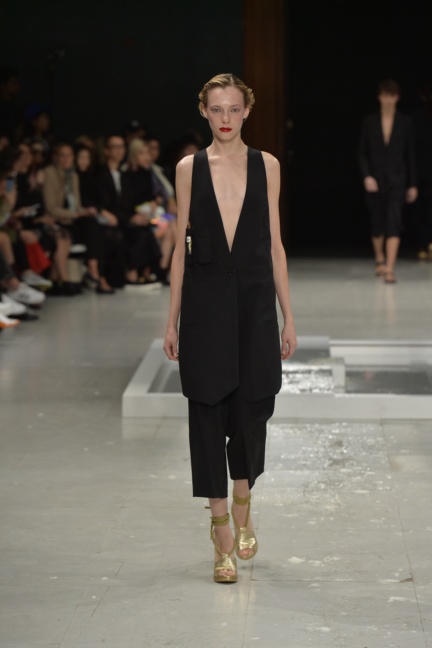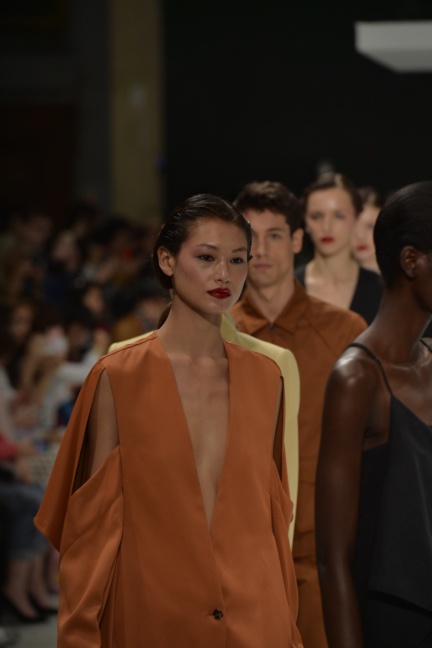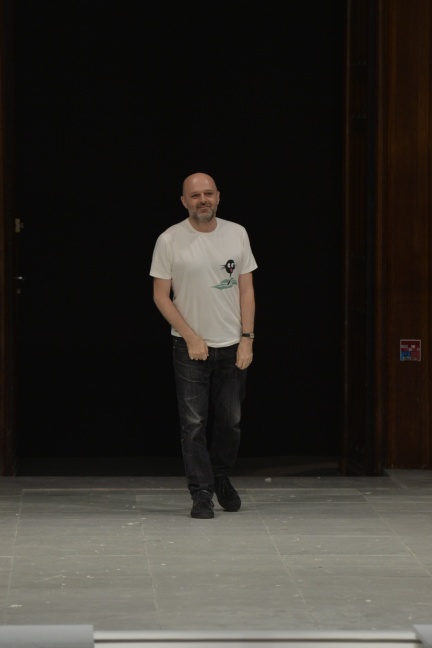“PASATIEMPO”
The central theme of Cuba continues to influence the Spring/Summer 2016 collection of Chalayan through unique interpretations, which are reflected in the cut of the garments and fabric developments.
As Cuba’s doors open to the US, it is possibly the last chance to capture the authenticity of the island where there is a strong interplay between the past and present. From its indigenous roots to Spanish Colonialism, this Caribbean Island has experienced the slave trade before emerging cradled in a socialist regime following the revolution in the 1950s.
Summer tailoring, drapery and military inspired dresses and skirts feature throughout the collection, together with Chalayan’s signature fabric manipulations, which are reflected in evening gowns.
Key fabrics include crisp cotton poplin and soft cotton in olive, tobacco and black. Also prevalent in the collection is crepe de chine alongside stretch crepe in poppy, lime, black, fresh mint and a light jacquard. The presence of music in Cuban life is depicted through graphic devoree prints of dancing couples, embellished with Swarovski crystal strips over the figures emphasizing their movements while, Cuba’s famous cigar industry is shown with textbook illustrations of cigars in various stages of preparation. Various statistics from before and after the revolution are printed on pleated voiles with jacquard foliage. A devoree version of the statistics is further enriched by Swarovski jet stones, highlighting certain areas of data and deeming them more precious and jewel-like.
“Plonk”, an illustrated character, originally created by Joan M. Davies in the 1940’s was used as inspiration to portray various scenarios in Cuba, whilst also capturing the developments taking place after the revolution. It is interpreted by Chalayan for this collection with Swarovski crystal eyes. Spring/Summer 2016 marks the designer’s 10th year collaborating with the Austrian brand with whom he has created many of his most stunning pieces, including the famed LED dress in 2007.
THE MELTING DRESSES
Inspired by the presence of female officials protecting various places in Cuba, guards are used as a symbol to represent the passing of time.
The female guards in an imagined Cuban uniform wait inconspicuously until the end of the show. Finally, they are sprayed by a shower of water which melts their uniform to reveal a 3D fabric with dancing palm trees charmingly embroidered over jacquard complete with Swarovski crystal coconuts. The melting uniforms also possess crystal strips in the inner structure of the garments which are unveiled when the rest of the garment is washed off by water, framing the newly visible dancing palm trees.






